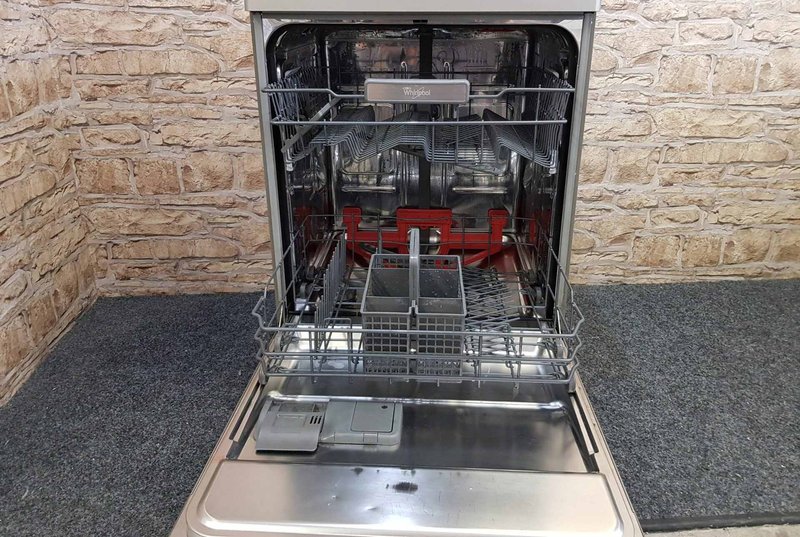
So, what exactly is this F1 error, and why is it causing your dishwasher to act up? In simple terms, the F1 error code typically signals a faulty temperature sensor or a problem with the heating element. It’s like when your car’s check engine light comes on — it might still be drivable, but something isn’t right under the hood. Before jumping to any conclusions, let’s break down what this means for you and your dishwasher.
Understanding the F1 Error Code
The F1 error is more than just a random combination of letters and numbers — it’s a specific signal from your appliance. Think of it as your dishwasher’s way of saying, “Hey, something’s off, and I need some attention!” Typically, this code is linked to issues with the temperature sensor. Why does this matter? Well, the temperature sensor’s job is crucial: it ensures the water is hot enough to clean effectively but not so hot it damages your dishes.
When the temperature sensor isn’t working properly, it can throw off the entire cleaning cycle, much like how a GPS with wrong directions can lead you astray. If the water doesn’t reach the right temperature, your dishes might come out less than sparkling, or worse, the machine might stop midway through a cycle. You wouldn’t want to eat off dishes that weren’t properly sanitized, right?
Moreover, aside from the sensor, other culprits could include wiring issues or problems with the heating element itself. While it might still seem like something you can ignore, these underlying problems can lead to more significant issues down the line. So, if you notice an F1 error, it’s your dishwasher’s plea for help. It’s best to address it sooner rather than later.
Is It Safe to Keep Using Your Dishwasher?
Here’s the million-dollar question: is it safe to continue using your Whirlpool dishwasher when this error pops up? Technically, the machine might still operate, but doing so is a bit like driving with a flat tire. Sure, you can do it, but it’s not advisable, nor is it safe in the long run. Operating under these conditions could exacerbate the issue, leading to more expensive repairs or permanent damage.
Using the dishwasher with a faulty sensor or heating element means it won’t perform optimally. Imagine trying to paint a masterpiece with the wrong colors — it just won’t turn out right. The same goes for your clean dishes. They might come out still greasy or encrusted with food, which is not only inconvenient but potentially unhealthy.
So, while you won’t get immediate danger from an F1 error, it’s a sign that you should definitely pause and reconsider before just ignoring it. Addressing the issue promptly can save you from bigger headaches and costs down the line. Next, let’s look at how you can tackle this issue head-on.
What to Do When You See the F1 Error Code
Alright, so your dishwasher is sounding the alarm with an F1 error. What’s the next step? First and foremost, don’t panic. Much like how you’d react to a computer glitch by rebooting, start by turning off the dishwasher and unplug it from the power source for safety. Give it a few minutes, and then plug it back in. This sometimes resets the system and might clear the error.
If the error persists, it’s time to dig a little deeper. Consult your dishwasher’s manual — it usually contains a treasure trove of information specific to your model. If you’re feeling handy and the manual is clear, you might attempt to check the temperature sensor and wiring yourself. However, remember that this isn’t a light job and if you’re unsure, it’s wise to call in a professional. It’s like being your own doctor versus seeing an actual one — sometimes, expert help is the better option.
Let’s say you decide to bring in a technician. They’ll have the right tools and expertise to diagnose whether it’s the sensor, the wiring, or the heating element itself that’s causing the issue. They can replace any faulty components safely and effectively, ensuring your dishwasher returns to its optimal condition. And there you have it — going from F1 panic to peaceful dishwashing.
Preventing Future Error Codes
Once you’ve conquered the F1 problem, you’re probably thinking, “How do I stop this from happening again?” Just like cars need regular oil changes, dishwashers benefit from routine maintenance. This keeps them running smoothly and detects issues before they escalate. Simple practices, like not overloading the dishwasher or using the right detergent, can also prevent strain on the appliance.
Moreover, regularly cleaning the filters and checking for blockages can prevent many common problems. Think of it as dental floss for your dishwasher — keeping everything clean and clear for optimal performance. And while it might sound basic, running the dishwasher periodically even when it’s not full can keep water and heat elements in regular use, reducing the chance of parts seizing up.
Finally, consider scheduling a professional check-up every year or two. It’s a small investment for the peace of mind that everything’s in excellent working condition. By staying proactive, you ensure your Whirlpool dishwasher remains a reliable helper in the kitchen, minus the pesky error codes.
To wrap it up, while the F1 error code might seem daunting, it’s an easily solvable hiccup in the grand scheme of things. Addressing it promptly not only restores your dishwasher’s performance but also enhances its longevity. Remember, treating your appliances with care means they’ll serve you well for years to come. Happy dishwashing!